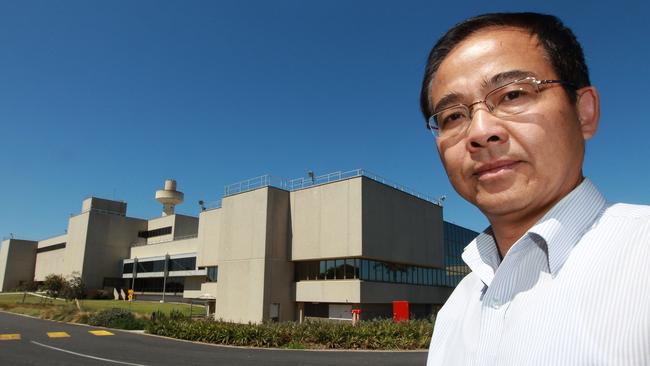Coronavirus spreading faster than SARS, says Australian expert
An Australian expert says the coronavirus appears to be spreading much faster than earlier outbreaks of similar diseases.

The scientist who sequenced and named Australia’s bat-borne Hendra virus more than 25 years ago says the deadly new strain of coronavirus appears to be spreading much faster than earlier outbreaks of similar diseases.
Linfa Wang, an Australian world expert on bat-borne diseases who heads Duke University’s joint Emerging Infectious Diseases program with the National University of Singapore, says the new disease appears to be more infectious than SARS, the severe acute respiratory syndrome disease that killed 774 people in 2002 and 2003.
“For SARS, it took five months to identify and more than 8000 people were infected,” Professor Wang said.
By comparison, scientists in the central Chinese city of Wuhan, where the disease broke out, had genetically sequenced the new coronavirus within two to three weeks, yet the new strain has already infected more than 2700 people since last month.
While that was a “huge improvement in an outbreak in which every hour is a lifesaver, if everybody had taken these doctors seriously at the time we might not have the problem we have today”, said Professor Wang, whose work on bat-borne diseases has earned him the sobriquet Batman.
Given the speed of transmission, the new coronavirus would likely reach 8000 patients much more quickly than SARS.
The mortality rate for SARS was 10 per cent, for the Middle East Respiratory Syndrome (MERS) it was 35 per cent, and for Hendra — which had low transmission rates — the mortality rate was 70 per cent.
Another key question was whether the number of cases would peak in the coming week, given most confirmed cases would have been transmitted before it was known the disease could jump from human to human.
But the biggest issue now for public health officials worldwide is how the virus mutates.
While the new strain, which causes pneumonia-like illness in sufferers, has spread to at least 16 countries outside China, most cases confirmed were still imported from Wuhan where the disease is believed to have originated in a seafood and wildlife market.
The Chinese-born Australian scientist, who previously worked at Geelong’s Animal Health Laboratory and helped develop the Hendra vaccine for horses, was one of a team of eight expert scientists invited by the World Health Organisation to China after the SARS outbreak to determine the source of the virus.
The team concluded it began in bats, as did the Hendra and Nipah viruses before it. He believes the current coronavirus likely also originated in bats though scientists must still determine whether there was an intermediate animal host that passed it on to humans.
Professor Wang is in self-imposed quarantine in Singapore, having left Wuhan just days before scientists confirmed the new virus could be transmitted between humans. But he says Chinese authorities have gone into over-drive, and that foreign governments’ efforts to evacuate their citizens is purely precautionary.
“If you exercise all cautions and in the worst-case scenario, still get infected, for most people it’s a common flu. You may get a fever of 38C and need rest for a few days.’’




To join the conversation, please log in. Don't have an account? Register
Join the conversation, you are commenting as Logout